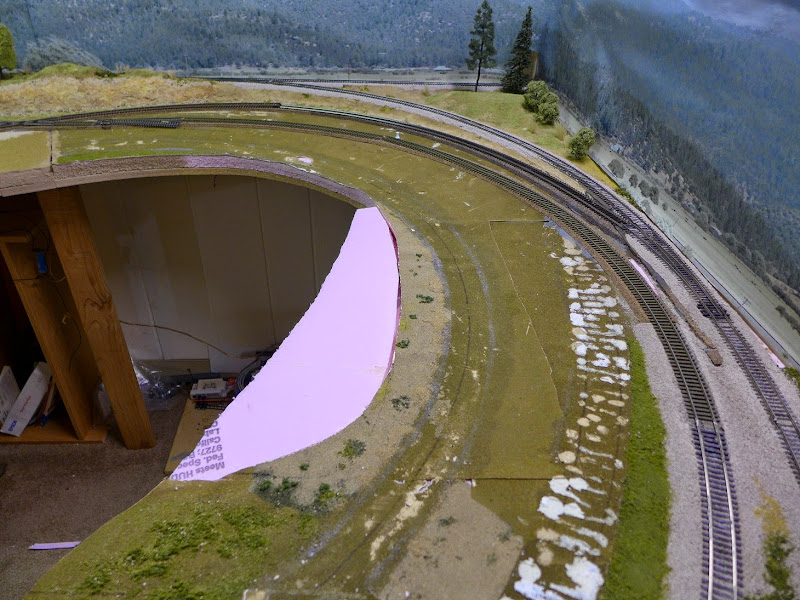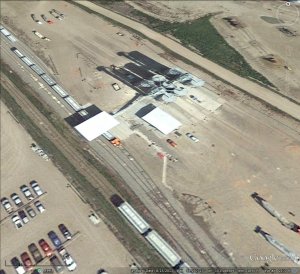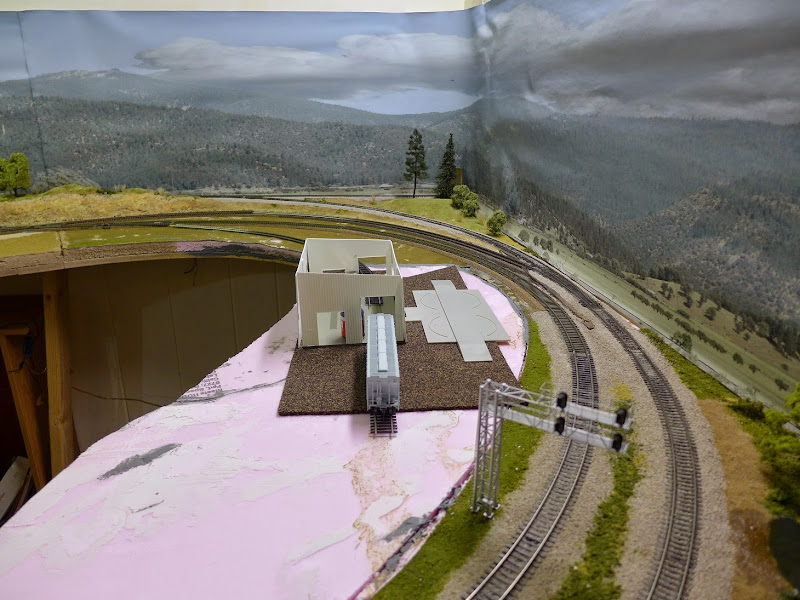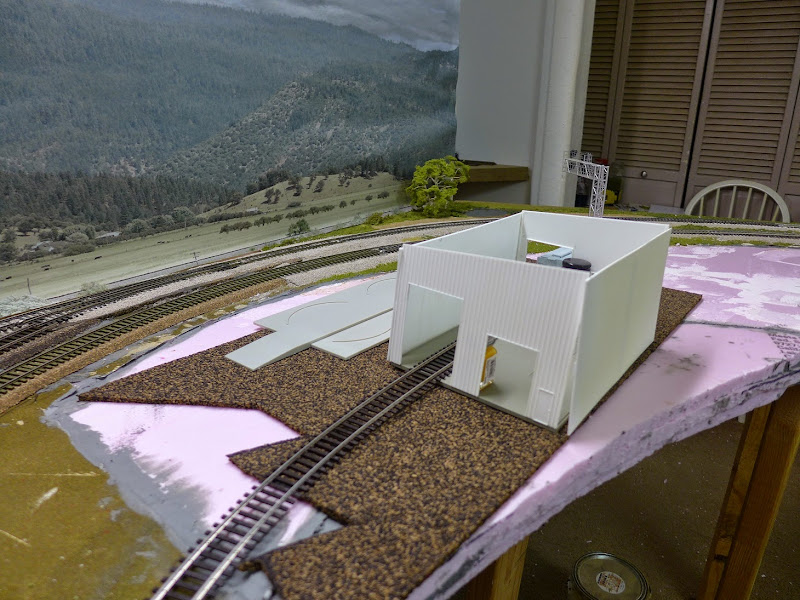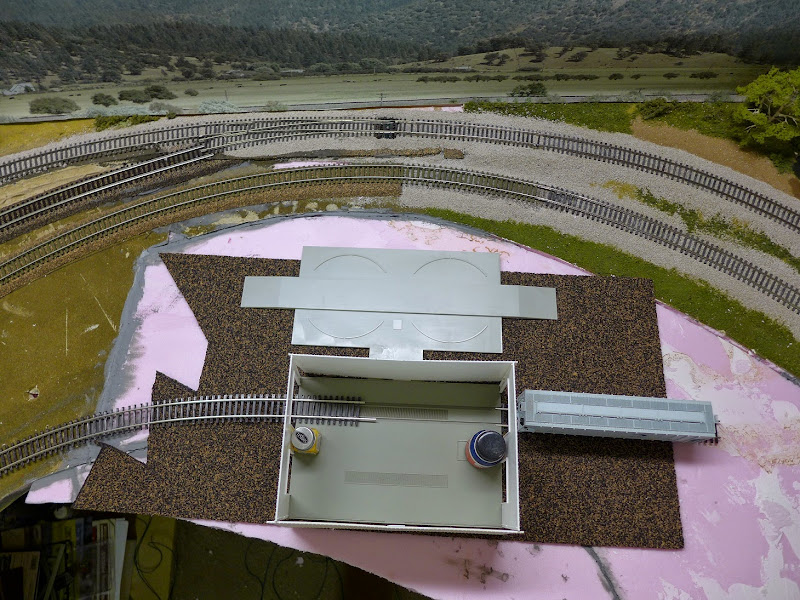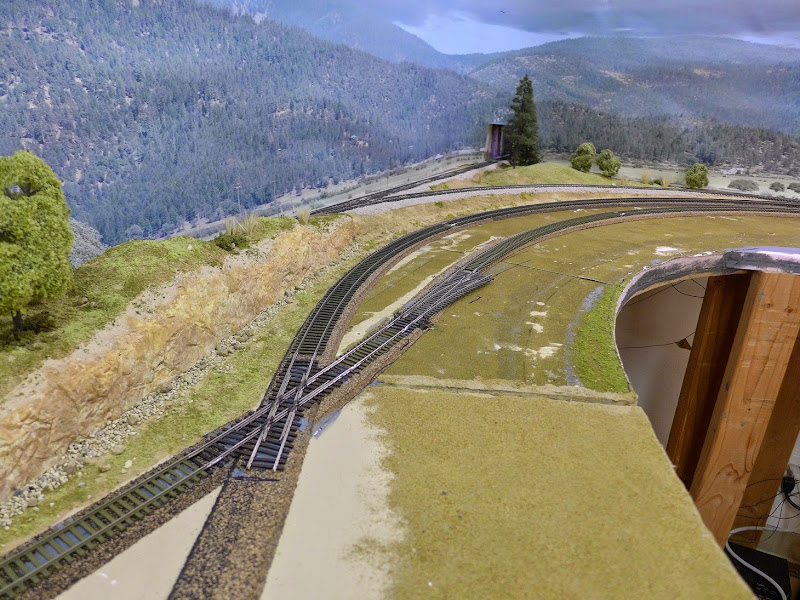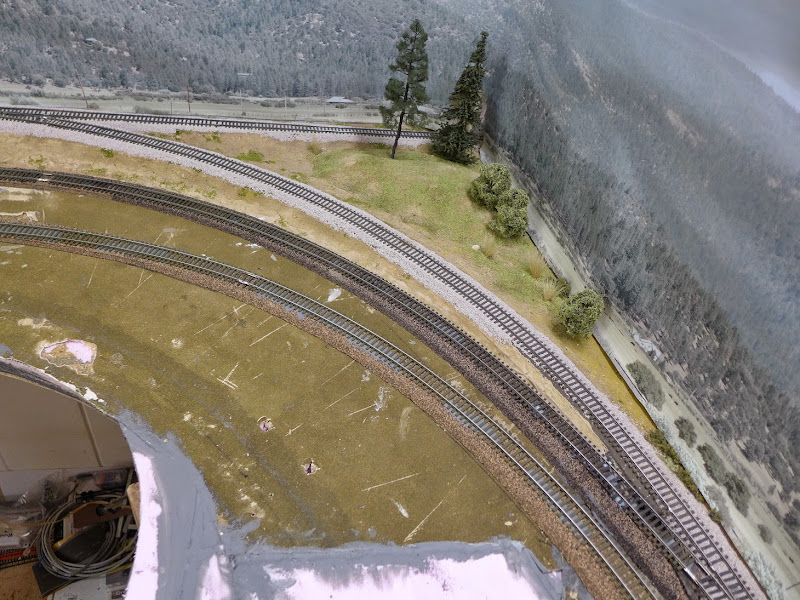Motley
Active Member
I started working on the two inside mainline tracks finally. The tracks will have a crossing, then to each of the two bridges spanning the river.
On the right side wall I have some space for a small industry. Walthers just released the Rail-to-Road Aggregate Transfer facilty. So I just picked it up.
They use sand, fertalizer, fracturing sand, and other granular materials.
Here: http://www.walthers.com/exec/productinfo/933-4036
The covered hoppers dump the sand below the grated rails. And a conveyor transfers it up to the two storage silos.
Then the trucks pull under the silos, fill up the trailers, then the trucks deliver it to fertilizer and frac sanding company's.
Check this company out here, they build these facilities.
http://alpineindustrialsystems.com/project-gallery/
http://alpineindustrialsystems.com/project-gallery/page/2/
I also picked up some trucks for this. A large dump truck for small loads, and a semi trailer for larger loads. The open top trailers have the tarps on them, so I will have to create a tarp for this.
This is where it will located.
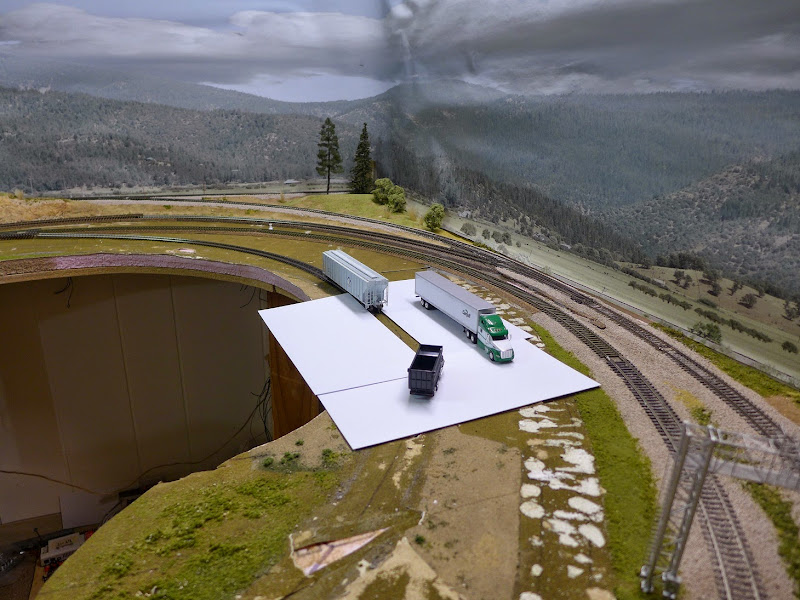
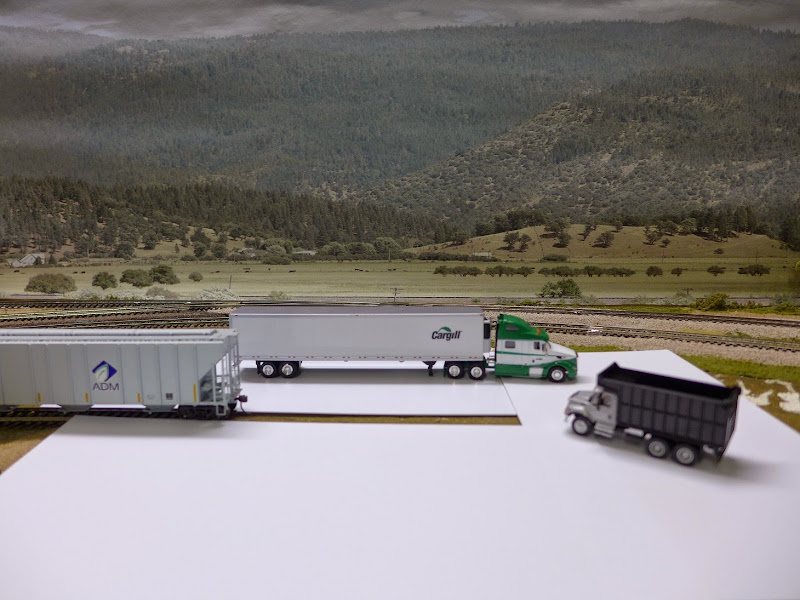
On the right side wall I have some space for a small industry. Walthers just released the Rail-to-Road Aggregate Transfer facilty. So I just picked it up.
They use sand, fertalizer, fracturing sand, and other granular materials.
Here: http://www.walthers.com/exec/productinfo/933-4036
The covered hoppers dump the sand below the grated rails. And a conveyor transfers it up to the two storage silos.
Then the trucks pull under the silos, fill up the trailers, then the trucks deliver it to fertilizer and frac sanding company's.
Check this company out here, they build these facilities.
http://alpineindustrialsystems.com/project-gallery/
http://alpineindustrialsystems.com/project-gallery/page/2/
I also picked up some trucks for this. A large dump truck for small loads, and a semi trailer for larger loads. The open top trailers have the tarps on them, so I will have to create a tarp for this.
This is where it will located.



